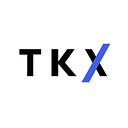Brinc Finance: Innovative Treasury-backed Token on Arbitrum | TKX Weekly
by @Guaaronnnn
editor @FriedWagyuu
Intro
OlympusDAO played a defining role in the rise of DeFi 2.0. Its unique mechanisms and tokenomics pioneered concepts such as protocol-owned liquidity and investing treasury assets to generate revenue for the protocol, making it a treasury-backed currency rather than a reserve-backed currency. On Arbitrum, there is a new treasury-backed currency project called Brinc Finance, which brings more value support to the native token.
Brinc Finance (BRC) is a decentralized asset designed to address the shortcomings of existing blockchain coins, stablecoins, and DeFi governance tokens. These lack collateral backing, intrinsic value, decentralization, and transparency. BRC’s value is determined by a bonding curve, based on its collateral reserve and premium. Unlike stablecoins, BRC’s value fluctuates, but its collateral reserve is secured by stablecoins, ensuring consistent backing. Brinc aims to provide a unique solution that combines both collateral backing and intrinsic value.
Mechanism
The BRC token ($BRC) is generated when stablecoins ($DAI) or other assets are added to the collateral reserve. Its value is linked to the total collateral with a 30% premium. The price of $BRC increases as more tokens are minted. The $BRC price and $BRC minted/burnt are determined by a bonding curve. This results in an increase in its value as the collateral reserve grows.
$BRC has implemented a mechanism to prevent a potential negative feedback loop leading to insolvency. A variable fee, ranging from 0–30%, is applied to all $BRC unminting. As the supply decreases, the unminting fee increases the collateral ratio for all remaining holders. This ensures that, even in adverse market conditions or during capital flight, the collateral reserve will continue to grow its capital, ultimately reaching full collateralization.
The initial reserve ratio of 70% does not necessarily mean that the price impact of buying or selling is the same at every level. The effect of each purchase or sale on the price can vary depending on the reserve ratio between the reserve asset and $BRC. A higher reserve ratio leads to lower price sensitivity, while a lower reserve ratio results in higher price sensitivity, as the market capitalization of $BRC is composed of collateral reserve and premium. In short, when more $BRCs are minted, the price of $BRC becomes more stable.
Final Thoughts
As a treasury-backed assets protocol, the fundamental concept of Brinc is similar to OlympusDAO, which uses deposits/collateral to earn yield from other DeFi protocols. The difference between Olympus and Brinc finance is that, in OlympusDAO, people’s rewards come from rebasing, whereas in Brinc finance, people’s rewards come from price appreciation based on the bonding curve.
Although Brinc intended to work as a treasury-backed assets protocol and earn yield from collateral, the flywheel hasn’t kicked off. Brinc’s TVL has been around $200k since it relaunched on Arbiturm, and 80% of this TVL might be from the team, as it hasn’t been withdrawn since launch.
In my opinion, Brinc finance hasn’t gained much traction because the design of the whole system appears to be quite Ponzi-like. Firstly, the more reserves in the treasury, the higher the price of $BRC, based on the formula behind the bonding curve. But why is it higher? It’s because late movers are actually paying first movers through the bonding curve. Secondly, there is an unminting fee ranging from 0% to 30%, which prevents people from unminting. Both of these factors are discouraging people from joining, as no one wants to compensate others, plus there is a high cost to leave.
Reference
https://brinc-fi.gitbook.io/documentation/
About TKX Capital
Website: TKX.CAPITAL
Twitter: @TKXCAPITAL
Build with us: HI@TKX.CAPITAL
Note: TKX Capital do not offer any financial advice for retail investors and we have no affiliation with projects in this research.
